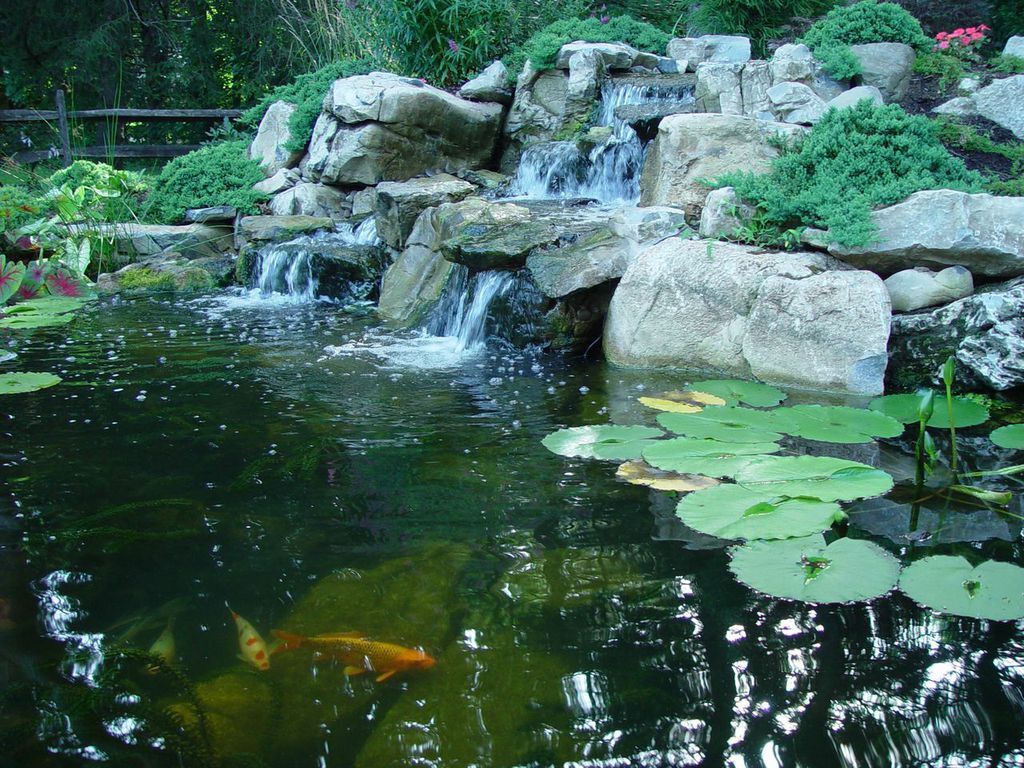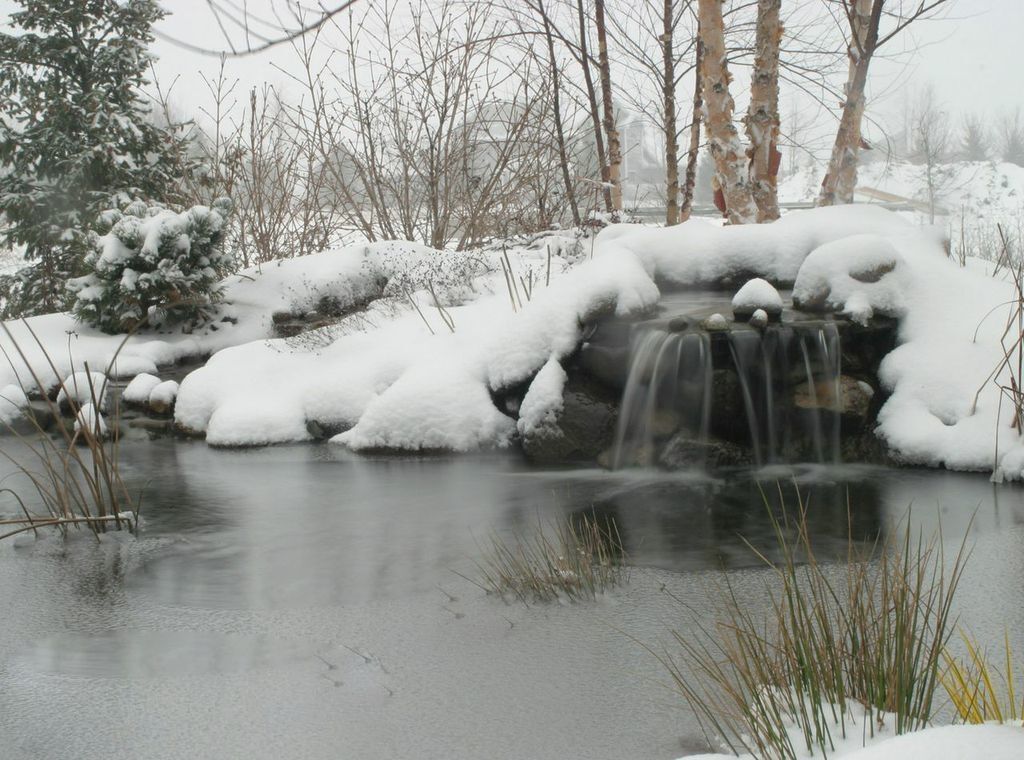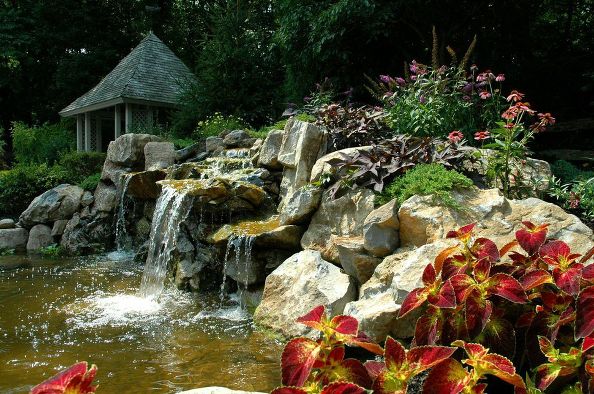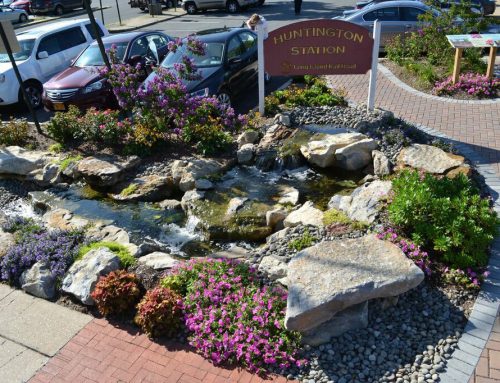We are not alarmists at The Deck and Patio Company, but our job requires that we pay attention to credible weather forecasts. And according to Accuweather, the Northeast may be in for an extended snowy winter, stretching into spring of 2017. If you have a backyard pond, there are a few things you can do to get ready for this onslaught.
Pond Fish in Winter
First, let’s deal with the misconception that you can’t leave your fish in the pond during winter months. Actually fish do just fine in winter. They go dormant and hibernate. However, our pond expert, Bill Renter, does add that it’s well to be especially alert to their needs once water starts to freeze. Should ice, for example, completely cover your pond, the fish could become starved for oxygen.
“This can be remedied by ensuring the pond has at least two feet of water for them to swim in,” says Bill. “It’s also key for the water to remain oxygenated by keeping a little hole in the ice with a heater, bubbler, and an aerator. We use products from Aquascapes Inc. — pond experts from St. Charles, Illinois.”
Aquascapes’ designs manager, Gary Gronwick agrees it’s important to use a pond de-icer. “This will keep a little hole in the ice so gases can escape,” he says. “While some recommend boiling water to create an opening in frozen-over ponds, that should be discouraged. It will only ice up again quickly.“
Gronwick also says to avoid chopping or sawing the ice to open a hole. The noise and vibrations will stress out the hibernating fish to a point they could die.
These things done, Mother Nature will do the rest. The fish will spend the entire winter hibernating at the bottom of the pond, or in a cave designed for this, and then will slowly wake up as the water warms in the spring. The fish do not need to eat during this time and, in fact, shouldn’t be fed at all.
We’ve included in our photo captions below more tips on preparing your pond and fish for winter and how to watch over it all. Happy ponding.
Before winter sets in, carefully look over your plants and remove any dying material. These materials rot and build up poisonous gases that can’t escape through ice when it forms. Such conditions might mean the koi are no longer simply hibernating, but are in a dangerous state of torpor.
Hardy water lilies (shown here) that float on the water’s surface and have a short blooming period can withstand the cold winter months nicely. Lotuses also can withstand the cold winter months because they bloom in summer and go dormant in winter. Note that frost kills water hyacinths; water lettuce, which fights algae, should be wintered in a warm spot that is well lighted as they will not survive in the pond over winter.












Plant life can also be a source of debris. As marginal and deep-water aquatic plants begin to die back, prune dead stems and leaves to prevent decay in the water during the winter. In late fall, recommend removing non-hardy aquatic plants like Water Hyacinths or tropical lilies from the water. Customers can store their plants in warm, frost-free conditions, like indoors, until next year.